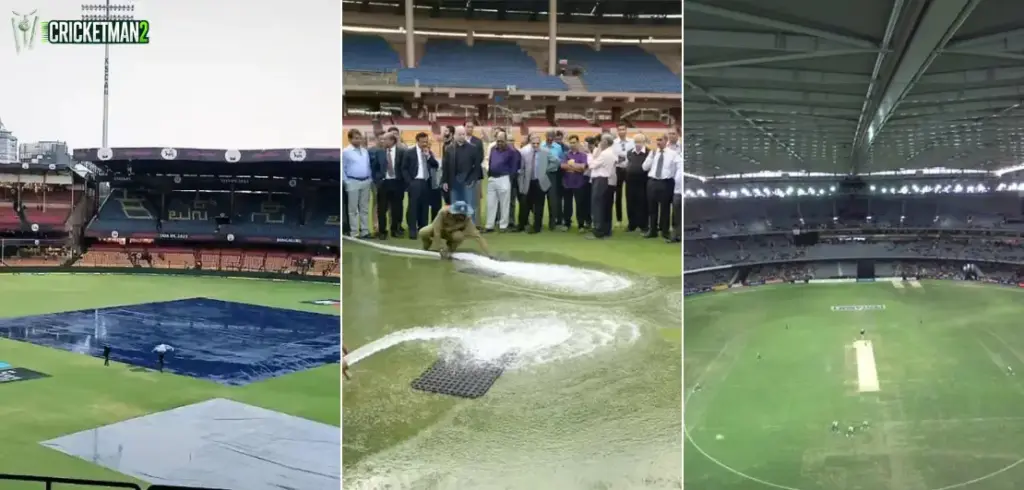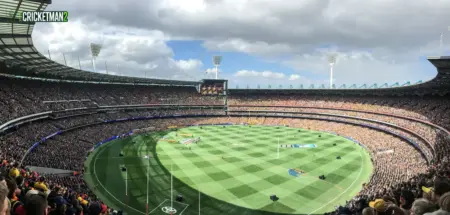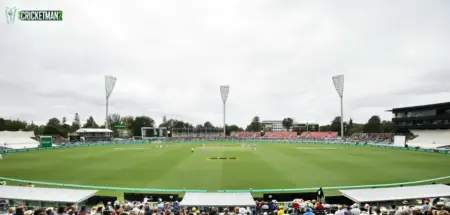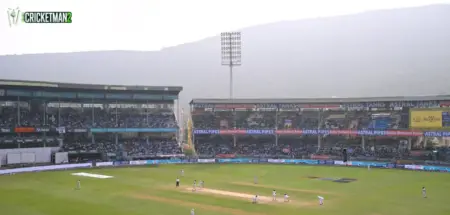Rain has always been cricket’s biggest enemy — delaying matches, frustrating fans, and impacting results. However, with modern technology and advanced drainage systems, several cricket stadiums across the world have overcome this challenge. These high-tech venues can clear rainwater within minutes and get the match back on track. Here’s a look at the top 5 cricket stadiums with the best drainage systems in the world, where rain is no longer a major obstacle.
Top 5 Stadiums with Best Drainage Systems
| Rank | Stadium Name | Location | Technology/Feature | Play Ready Time |
|---|---|---|---|---|
| 1 | M. Chinnaswamy Stadium | Bengaluru, India | SubAir Vacuum Drainage | 15 mins |
| 2 | Eden Gardens | Kolkata, India | Sand-Based Advanced Drainage | 20 mins |
| 3 | Docklands Stadium | Melbourne, Australia | Retractable Roof | Instant |
| 4 | Lord’s Cricket Ground | London, England | Hover Cover + Drainage | Few minutes |
| 5 | R. Premadasa Stadium | Colombo, Sri Lanka | Modern Drainage & Cover System | 20–30 mins |
1. M. Chinnaswamy Stadium, Bengaluru – The World’s Fastest Drainage System
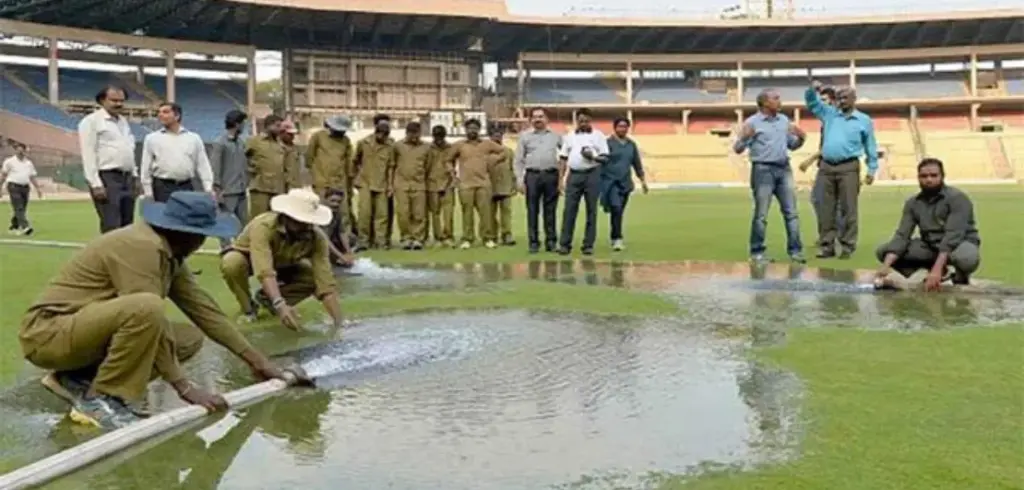
Located in Bengaluru, India, the M. Chinnaswamy Stadium is widely regarded as having the best drainage system in the world. The venue became a global benchmark in 2017 when it installed the SubAir subsurface aeration and vacuum-powered drainage system, developed by SubAir, USA.
Key Features:
- Technology: SubAir System (installed in 2017)
- Machine Power: 200 Horsepower
- Drainage Speed: 10,000 litres of water per minute
- Time to Resume Play: 15–20 minutes after rain stops
This advanced system works through a network of underground pipes and sensors that automatically activate as soon as rain begins. It quickly removes water using vacuum suction and pumps oxygen to the turf through aeration mode.
In addition, the sand-based outfield ensures quick water percolation, while Super Sopper sponges remove surface moisture. Whether it’s a Test or an IPL match, fans at Chinnaswamy rarely face long rain delays — making it the world’s best rain-ready cricket venue.
| Stadium Feature | Specification |
|---|---|
| Location | Bengaluru, India |
| Drainage System | SubAir Aeration & Vacuum Drainage |
| Installation Year | 2017 |
| Speed | 10,000 litres/min |
| Ready Time After Rain | 15 minutes |
2. Eden Gardens, Kolkata – India’s Heritage with Modern Technology
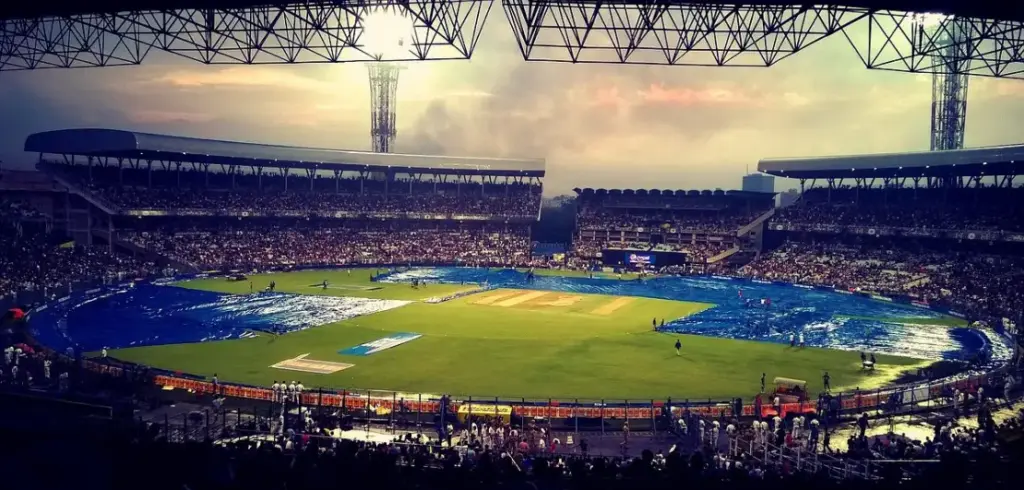
Eden Gardens, one of the oldest and most iconic cricket grounds in the world, has undergone a major technological transformation in recent years. The Cricket Association of Bengal (CAB) revamped the stadium’s drainage system, enabling it to dry and be ready for play within just 20 minutes, even after heavy rain.
Highlights:
- Drainage Time: 20 minutes after rainfall stops
- Modern Equipment: Multiple ground covers, high-speed pumps, and Super Sopper rollers
- Recent Upgrades: Enhanced sand layering and improved turf aeration
Eden Gardens now matches international standards for quick recovery after downpours and has become a role model for other Indian stadiums.
| Stadium Feature | Specification |
|---|---|
| Location | Kolkata, India |
| Technology | Modern Sand-Based Drainage |
| Ready Time After Rain | 20 minutes |
| Maintenance | Managed by CAB Grounds Team |
Read Also:- Most Beautiful Cricket Stadiums in the World
3. Docklands Stadium, Melbourne – The Fully Covered Cricket Ground
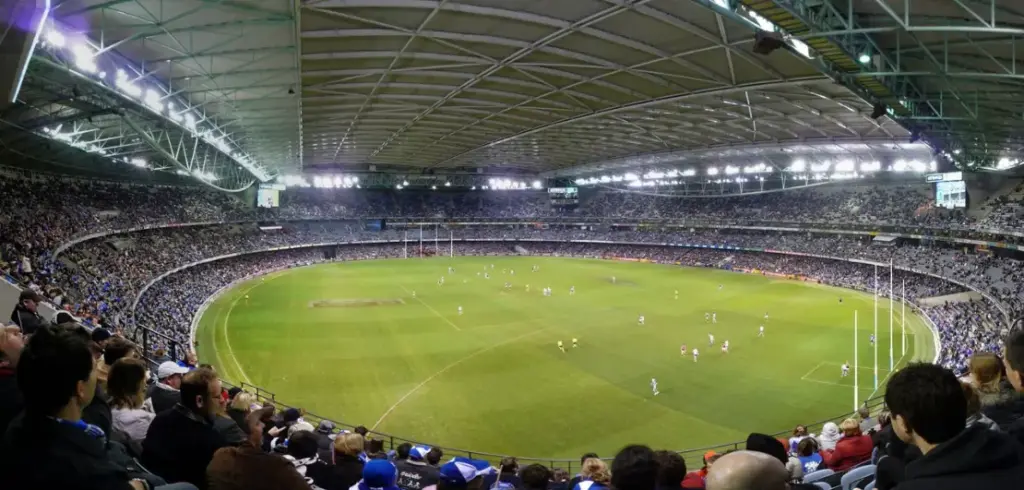
Australia’s Docklands Stadium (Marvel Stadium) in Melbourne is unique because it features a fully retractable roof. Built in 2000, it is designed to handle all weather conditions — rain, heat, or wind — ensuring that no match is ever interrupted due to the weather.
Key Features:
- Technology: Retractable roof and climate-controlled environment
- Match Continuity: Games continue even during storms
- Usage: Hosts Big Bash League (BBL) and international matches
Docklands is a prime example of how architecture and technology can work together to make cricket truly weather-proof.
| Stadium Feature | Specification |
|---|---|
| Location | Melbourne, Australia |
| Feature | Retractable Roof |
| Built | 2000 |
| Matches Played | BBL & International Games |
4. Lord’s Cricket Ground, London – The Home of Hover Cover
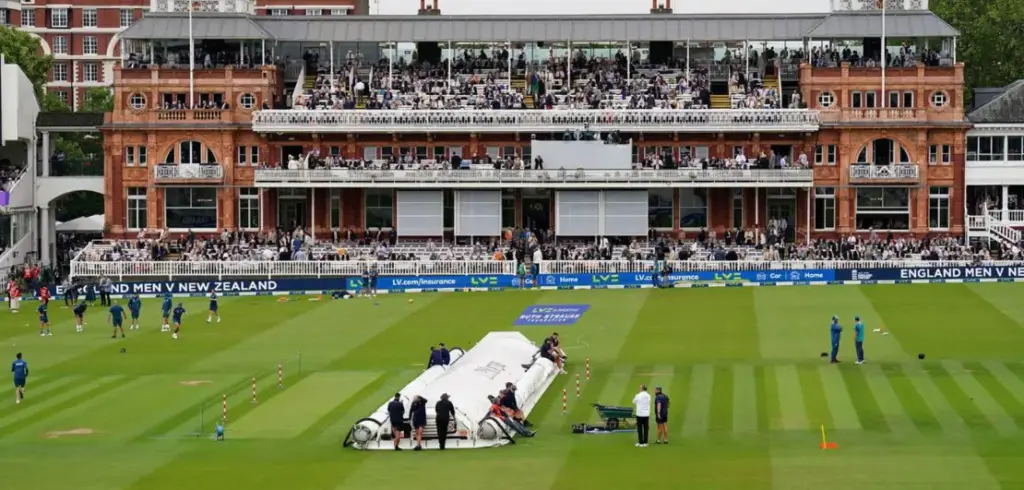
Known as the “Home of Cricket”, Lord’s Cricket Ground in London not only carries history but also modern innovation. The ground uses hover covers, which float above the surface and can be deployed across the pitch in seconds.
Highlights:
- Technology: Hover Cover System
- Function: Covers pitch instantly and protects turf from damage
- Additional Systems: Advanced drainage channels and air-circulation turf management
The hover cover is easy to maneuver and requires fewer people compared to traditional covers. Combined with an efficient drainage network, Lord’s ensures quick resumption of play after showers.
| Stadium Feature | Specification |
|---|---|
| Location | London, England |
| Cover System | Hover Covers |
| Special Feature | Fast Drainage + Minimal Manpower |
| Known For | Historical Ground with Modern Facilities |
5. R. Premadasa Stadium, Colombo – Sri Lanka’s All-Weather Venue
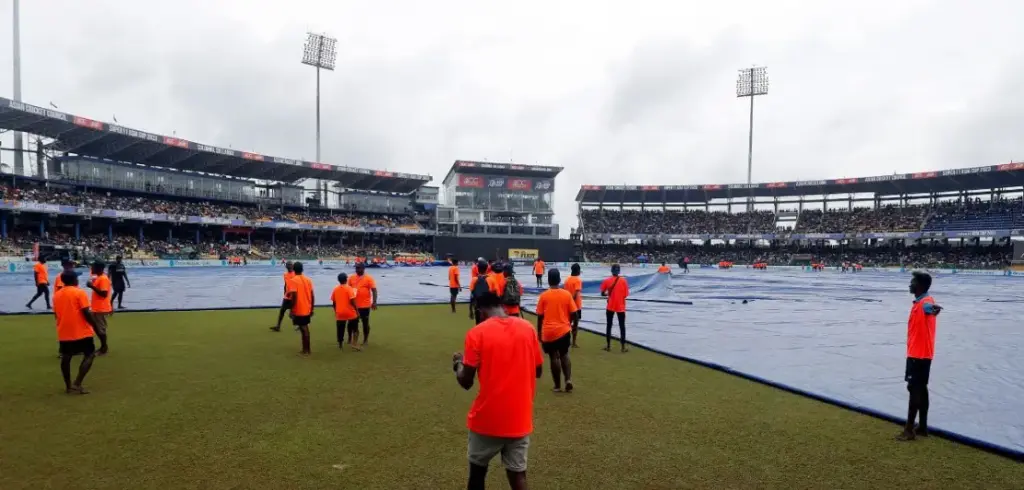
Sri Lanka’s R. Premadasa Stadium in Colombo is one of the most advanced stadiums in Asia when it comes to handling rain interruptions. The ground has a high-speed drainage network and a complete field-covering system, allowing it to recover quickly after rainfall.
Key Highlights:
- Drainage System: Modern sand-based network
- Rain Protection: Full field can be covered in minutes
- Performance: Match-ready soon after rain stops
The efficiency of its ground staff and upgraded infrastructure ensures that cricket matches in Colombo rarely get abandoned, even during the monsoon season.
| Stadium Feature | Specification |
|---|---|
| Location | Colombo, Sri Lanka |
| Drainage Type | High-Speed Modern Drainage |
| Ground Cover | Full-Field Covering System |
| Time to Resume | 20–30 minutes |
You Can Also See:- Cricket Stadiums with the Biggest Boundaries in the World
Why These High-Tech Stadiums Matter
Rain interruptions can cost boards millions in broadcast losses and ticket refunds, not to mention the disappointment for fans. High-tech drainage systems and weather-proofing technologies like SubAir, Hover Covers, and Retractable Roofs ensure:
- Minimal match delays
- Player safety and pitch quality
- Better viewing experience
- Sustainable water use through recycling
Conclusion
Cricket’s evolution isn’t limited to players and formats — technology has played an equally vital role. The SubAir system at M. Chinnaswamy Stadium has set global standards, inspiring venues like Eden Gardens and R. Premadasa to modernize their infrastructure.
With such innovations, rain is no longer the villain of the game. Instead, these high-tech cricket stadiums prove that the future of cricket is not just skill-driven but also technology-driven, ensuring uninterrupted action for fans worldwide.

